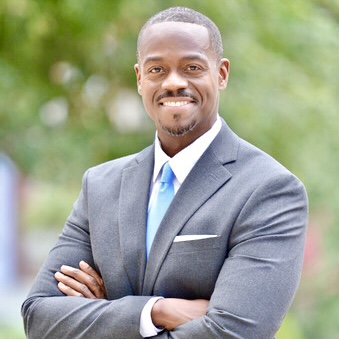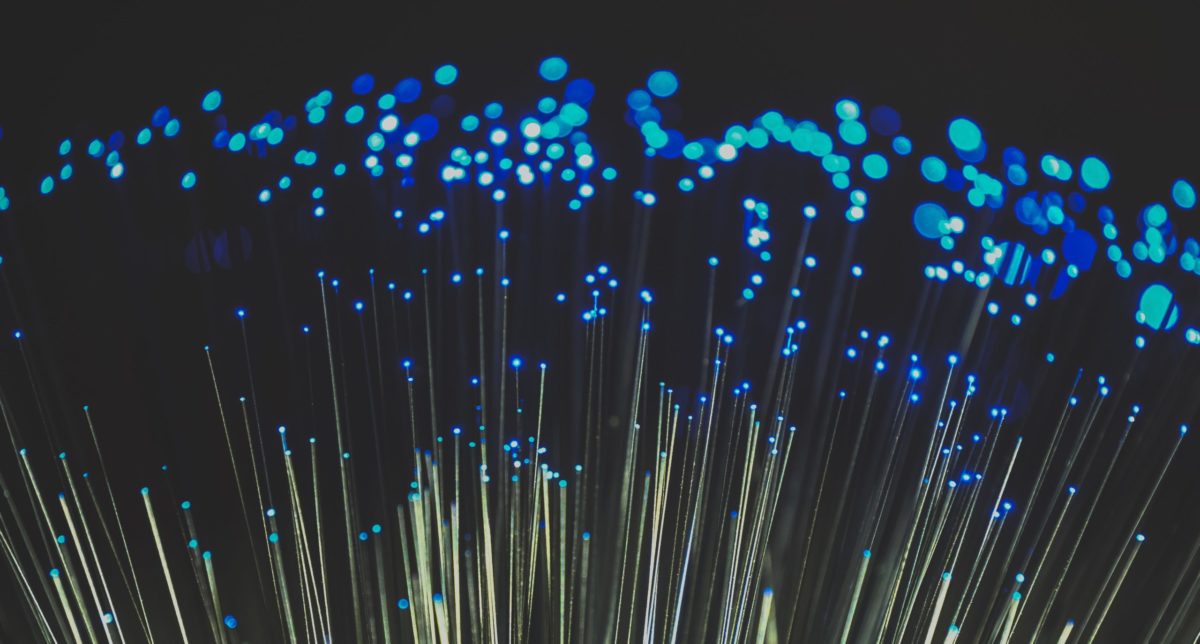As little as 50 years ago, a mention of infrastructure brought to mind roads, bridges and ports — the public works that helped everyone keep moving and stay connected.
But in the recent Infrastructure Investment and Jobs Act, approved by Congress and stamped by President Joe Biden, a new player was brought to the table: broadband. On top of plans for the energy sector and America’s roads, the law is dedicating $65 billion to boosting internet access and connectivity. It’s a move toward closing the digital divide that exists in both rural areas and cities.
It comes as the pandemic has shown the central role the internet plays for work, healthcare, the economy (Exhibit A: the pile of cardboard boxes from your online ordering sitting in your home), transportation and staying connected with friends and family. For those who didn’t have access, it made closing gaps more urgent. Many say that now is the time to invest in fixing and improving the country’s connectivity.
Peter Chandler, vice president for federal policy and government relations at tech interest organization TechNet, noted that broadband is just as critical for the economy as other types of infrastructure, and even supports it.
“We often talk about infrastructure in this country as being critical to commerce, critical to growing the economy,” Chandler told Technical.ly. “If our bridges and roads are falling down, we can’t goods to market, then it takes longer and that costs more…[but] the infrastructure of broadband, I think, shores up the traditional infrastructure.”
In cities like DC, with the rise of virtual learning, telehealth, remote work and other digital functions in the COVID-19 pandemic, expanding access to broadband has quickly become as necessary as fixing major roadways. But for the DC government, it’s by no means a new pursuit, particularly when it comes to addressing the digital divide among residents.
In the past budget year, DC Chief Technology Officer Lindsey Parker said funding has been allotted for devices, such as one donation of iPads and tech support for 500 seniors, Another initative with the Department of Health and Human Services brought Wi-Fi to hotels being used as quarantine sites for those without stable housing during the height of the pandemic. DC also launched Internet for All, which gives a free year of internet access to students.
Alongside those efforts, though, the bill will bring millions of dollars for the District to put towards physical broadband infrastructure, digital literacy programs and even an emphasis on cybersecurity. And it’s especially relevant considering that according to District data, 25% of households in DC lack access to broadband internet and about 17% don’t have access to a computer. Yet it’s not a piece of legislation that can work alone, and multiple stakeholders in the District want to make sure those dollars are put towards the right efforts.
All in all, the infusion of capital from the infrastructure bill, Parker said, means that the District, Mayor Muriel Bowser’s office and others can do more than ever before.
“What the infrastructure bill really does for a jurisdiction like Washington DC, is it allows us to go even further,” Parker said.
Connecting DC
When it comes to local impact, one of the most noteworthy parts of the bill is that the District is slated to receive a direct allocation of federal funds. According to Chandler, DC will receive approximately $100 million for broadband expansion over the span of five years.
“It’s a lot of money and it’s a very major investment,” Chandler said. “So what we’re going to shift our attention to now is making sure that it’s done as quickly as possible, but also that there’s transparency and that…the money is not only efficiently put out there, but is spent right.”
What the infrastructure bill really does for a jurisdiction like Washington DC, is it allows us to go even further.
On top of the broadband funding, the bill will require those receiving funds to offer an affordable plan for internet service, and require providers to show a “Broadband Nutrition Label” that will make it easier for families to shop around. With the passing of the infrastructure law, the Digital Equity Act was also approved. This delegated $2.75 billion for the State Digital Equity Capacity and the Digital Equity Competitive grant programs. Other provisions include a requirement for the Federal Communications Commission to ban digital redlining.
The bill also allotted an investment in cybersecurity to protect the area’s network. Overall, the District will get $10 million for cyber, which Parker said will have a number of benefits. In addition to the funds, which she said are the first-ever major injection of capital into state and local cybersecurity efforts, she thinks it will help bridge the digital divide by building trust in the internet among those who are apprehensive.
Parker said there’s a need to educate community members who haven’t used the internet before. That goes alongside providing access. If they can trust that a government’s system is secure, “I think that goes a long way in helping somebody that hasn’t used technology to actually use it,” she said.
Official plans are still in the works, but Parker also hopes DC will put some of the cyber funding towards training programs for employees of state and local jurisdictions. She noted that there’s still a difficulty in hiring for all IT positions, but especially for state and local government since federal entities and large tech firms offer more appealing salaries. The ability to comp the cost of training programs, she hopes, will incentivize more applicants.
What’s missing?
Joe Paul, CEO of digital equity and literacy organization Byte Back, also pointed to a need for training, especially for those who are new to broadband access. While acknowledging that the law is a big step forward, a major missing element, he said, is a direct statement on investments in tech education and certifications. It lacks specific language on whether or not the funding will cover resources needed to train constituents in technical skills, which he said is necessary given the importance of digital tools in a changing workforce.
With the lack of specific language, he also has concerns that the funding will be offered primarily to internet providers, instead of non-government organizations (NGOs) who are doing the legwork in communities.
“The bill makes a seismic investment in infrastructure but investment in community relations is a critical missing element,” Paul said. “The long-term positive impact that digital equity would have on all communities should be touted as a reason for the bill’s investment.”

Local government is looking to take up this work. To Parker, it means thinking ahead about how the infrastructure funding can work in tandem with the initiatives already in place from the District and mayor’s office. Already, she said, the District has brought together interest groups and thought partners to discuss the specific surrounding digital equity in DC, and it’s starting to make moves towards piloting some of the initial programs.
“We’ve thought about what we want to achieve, we’ve thought about the measures we want to put in place to make sure we’re actually achieving those goals, so we’re ready to hit the ground running…” Parker said. “This will just allow us to scale up faster than ever envisioned.”
Closing the digital divide
According to DC‘s Digital Inclusion Initiative, the home broadband adoption rate in Wards 5, 7 and 8 is 65%, compared to 85% in Wards 1, 2, 3, 4 and 6, meaning the need to bridge the digital gap is high.
Given the importance of digital literacy skills alongside providing access, Paul said Byte Back plans to work with other foundations, NGOs and corporations to close the divide and increase its footprint in these communities. That’s necessary work for the digital opportunities the bill opens up.
“At the very least, it should decrease the number of individuals who lack equitable access to the internet; it will help reskill and upskill individuals whose jobs will be supplanted due to automation and AI,” Paul said. “Without broadband access, you cannot fully participate in nor benefit from the digital economy.”
This bill has the opportunity to fundamentally transform digital equity.
Parker, for her part, hopes that the funding can work in conjunction with the District’s efforts to get devices in the hands of residents to offer true, full digital access going forward. The hope is that with increased and comprehensive broadband access, residents can have more more access to jobs, healthcare and other opportunities.
“My whole hope is that we can use this massive injection of capital to really change the way that all residents experience the ability to get online,” Parker said. “If we make that easier, maybe that also helps bridge that digital divide.”
While the bill has its shortcomings, Chandler thinks there’s plenty of room for real change in the legislation.
“This bill has the opportunity to fundamentally transform digital equity,” Chandler said. “Now, is it going to be perfect? Is it going to fix every single thing? Is every single American going be magically connected? No. But it’s going to get us closer than we’ve ever gotten before.”







